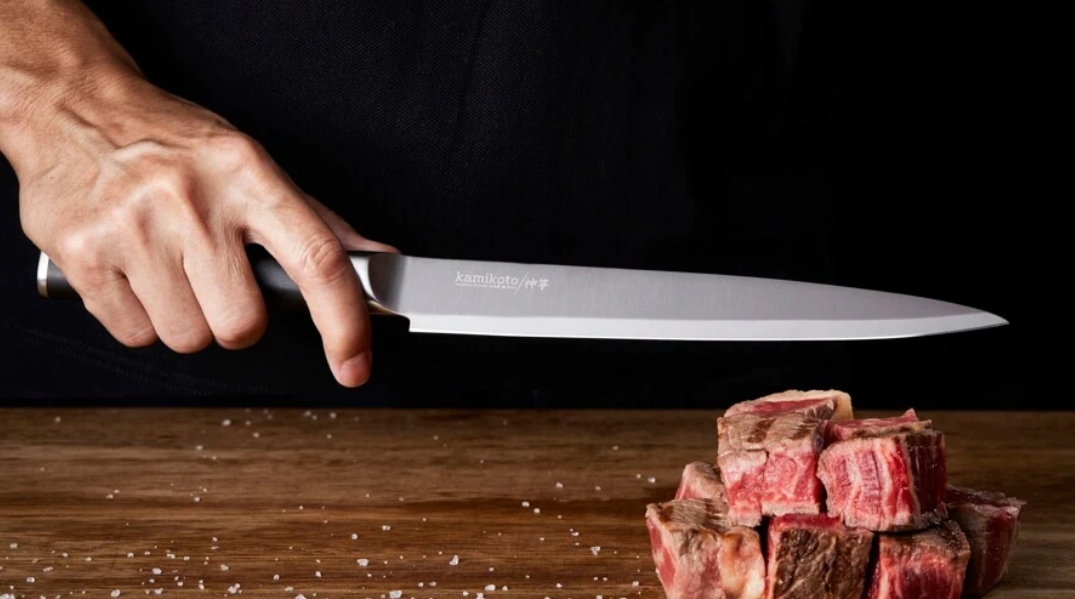You might think that the essence of a kitchen knife is its blade. But it’s not. It’s the handle.
The handle is what makes cooking with a knife an intimate experience — you’re holding a piece of steel that could easily kill you, but the handle makes it safe and pleasurable to use. The handle is what makes it possible for you to use your knife for hours on end without getting tired or injured; it gives you control over the sharp edge and lets you use it safely.
There are three important criteria necessary for choosing good wholesale knives handles: weight, material and comfort.
- Weight: The heavier the better
- Material: Wood or plastic?
- Comfort: How do I hold my knife?
Types of Kitchen Knives
The first thing you need to know is what kind of knife is best for your particular needs. Here are some of the most common types:
Chef’s Knife
A chef’s knife is probably the most common type of kitchen knife. It has a wide blade and a sharp point, with a curved edge. You can use it to chop, mince and slice all sorts of foods – everything from vegetables to chicken and fish.
Serrated Bread Knife
A serrated bread knife has small saw-like teeth on one side of its blade, which makes it great at cutting through tough crusts on loaves or bagels without crushing them into crumbs. It can also be used for slicing cakes and pies with thick tops.
Boning Knife
Boning knives are long and thin, with flexible blades that curve near the tip so they can follow the shape of bones as they cut them free from meat or fish carcasses. They’re ideal for boning large cuts like whole chickens or pork shoulders before cooking them in the oven or on the grill.
Carving knife
This long, thin blade is designed to slice meats into thin slices for serving. It’s similar to a chef’s knife in shape and size but has a pointed tip instead of a rounded one.
Cleaver Knife
This large, heavy knife is used for chopping meat or bones and for smashing garlic cloves with its broad blade. The cleaver’s blunt edge provides stability when chopping hard foods, while its sharp edge makes short work of cutting soft foods such as vegetables. Use it with caution — it can be dangerous if mishandled!
What to Be Cautious About When Handling Kitchen Knives
You’ve probably heard that kitchen knives are dangerous. But just how dangerous are they?
Here are some things to keep in mind when handling kitchen knives:
- Don’t leave a knife lying on the countertop or table, where it could be grabbed by an unwary child or pet.
- Make sure the blade is sharp before using it. Dull knives are more likely to slip while cutting food, leading to slips and cuts.
- If you’re holding a large piece of food with one hand while cutting it with a knife in your other hand, make sure that both hands stay clear of the knife’s path when you cut through dense foods like carrots or celery stalks (or use a cutting board). You don’t want anyone else getting hurt because of your carelessness!
Conclusion
Now you are equipped with the knowledge to find the best kitchen knives on the market. Whether your goal is to make a sound investment or someone in your household loves to cook, now you can make an informed decision. There is no reason to overpay for marketing so take some time and read all the specs first. Take your time and look at all choices available, not just what you are initially drawn to. If it seems too good to be true, there is probably a catch. The best kitchen knives will cut like butter and slice like a razor through a tomato or piece of cake. You can never go wrong with high quality, no matter how expensive it may seem at the time.
